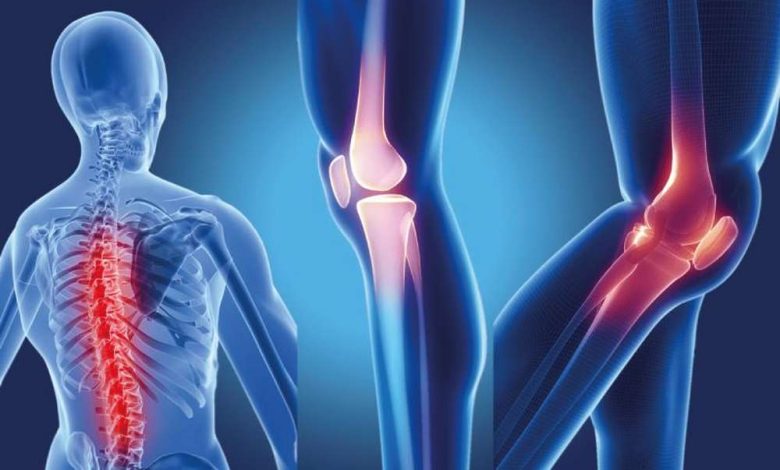Joint pain, arthralgia: what is this, causes, symptoms, diagnostics, treatment, prevention

Joint pain; Stiffness in a joint; Pain – joints; Arthralgia; Arthritis
What is joint pain?
Joint pain, also known as arthralgia, represents any kind of discomfort or pain, caused by abnormalities in the joints. Joint pain can be acute or chronic and can range from mild to severe. It can be caused by a wide range of conditions, including arthritis, ʙursit, Tendinitis, gout and more.
Causes of joint pain
Joint pain can be caused by various factors., including age wear, trauma, infection or even the development of certain diseases. Some of the most common causes of joint pain include:
- Arthritis. Arthritis is a general term, used to describe joint inflammation. Osteoarthritis, rheumatoid arthritis and gout - all forms of arthritis, which can cause joint pain.
- Bursit. Bursitis is an inflammation of the bursae, which are small fluid-filled sacs, cushioning joints. Bursitis is usually caused by repetitive or strenuous activities or joint injury..
- Tendinitis. Tendinitis is an inflammation of the tendons, which are strong fibrous strands, by which muscles are attached to bones. Tendinitis is usually caused by repetitive or strenuous activities..
- Gout. Gout is a type of arthritis, which is caused by the accumulation of uric acid in the joints. Gout can be caused by high levels of uric acid in the blood, a diet high in purines and other diseases.
- Trauma. Joint injury, e.g. torn ligaments or tendons, can cause joint pain.
- Infection. Joint infections, such as septic arthritis and Lyme disease, can cause joint pain.
- • Autoimmune diseases. Autoimmune diseases, such as lupus and rheumatoid arthritis, can cause joint pain.
Symptoms of joint pain
Symptoms of joint pain can vary depending on the underlying cause.. Common symptoms include:
- Stiffness or decreased range of motion
- Swelling
- Redness
- Warmth to the touch
- Pain when moving the joint
- Weakness
- Cracking or grinding when the joint moves
Diagnosis of joint pain
Your doctor will start with, which will ask you about your symptoms and medical history. He can also conduct a medical examination, including checking your range of motion and the affected joint for tenderness or swelling.
Your doctor may also order imaging tests., such as X-ray or MRI, to help diagnose the cause of joint pain.
Treatment of joint pain
Treatment for joint pain depends on the underlying cause. Treatment options may include:
- Medicines. Nonsteroidal anti-inflammatory drugs (NSAIDs) and steroids can help reduce inflammation and pain.
- Physiotherapy. Physical therapy can help strengthen the muscles around the joint, increase range of motion and reduce pain.
- Surgical intervention. In some cases, surgery may be required to repair a damaged joint or remove damaged tissue..
Home treatment for joint pain
There are several home remedies, which can relieve joint pain and improve quality of life. Some of these tools include:
- Heat or cold therapy. Applying heat or cold to the affected joint may help relieve pain and stiffness.
- Physical exercise. Regular exercise can help strengthen the muscles around the joint and improve range of motion..
- Recreation. Resting the affected joint may help reduce pain and inflammation..
- Diet. Healthy eating can help reduce inflammation and improve joint health.
Prevention of joint pain
There are several steps, you can take, to prevent joint pain. This includes:
- Maintaining a healthy weight. Being overweight can put extra stress on your joints, so it's important to maintain a healthy weight.
- Regular exercise. Regular exercise will help keep your joints strong and flexible..
- Avoid repetitive movements. Repetitive movements can put extra stress on joints, so it's important to take breaks and diversify your activities.
- Wearing shoes with good support. Wearing shoes with good arch and heel support can help reduce stress on your joints..
- Follow a healthy diet. Eating a healthy diet with lots of fruits, vegetables and whole grains may help reduce inflammation and improve joint health.
- Joint protection. Protecting your joints from injury can help reduce your risk of joint pain.
Used sources and literature
Bykerk VP, Crow MK. Approach to the patient with rheumatic disease. In: Goldman L, Schafer AI, eds. Goldman-Cecil Medicine. 26th ed. Philadelphia, PA: Elsevier; 2020:chap 241.
Davis J.M., Mother KG, Dogs GG. History and physical examination of the musculoskeletal system. In: Firestein GS, Budd RC, Gabriel SE, Koretzky GA, McInnes IB, O'Dell Jr, eds. Firestein & Kelley’s Textbook of Rheumatology. 11th ed. Philadelphia, PA: Elsevier; 2021:chap 43.
